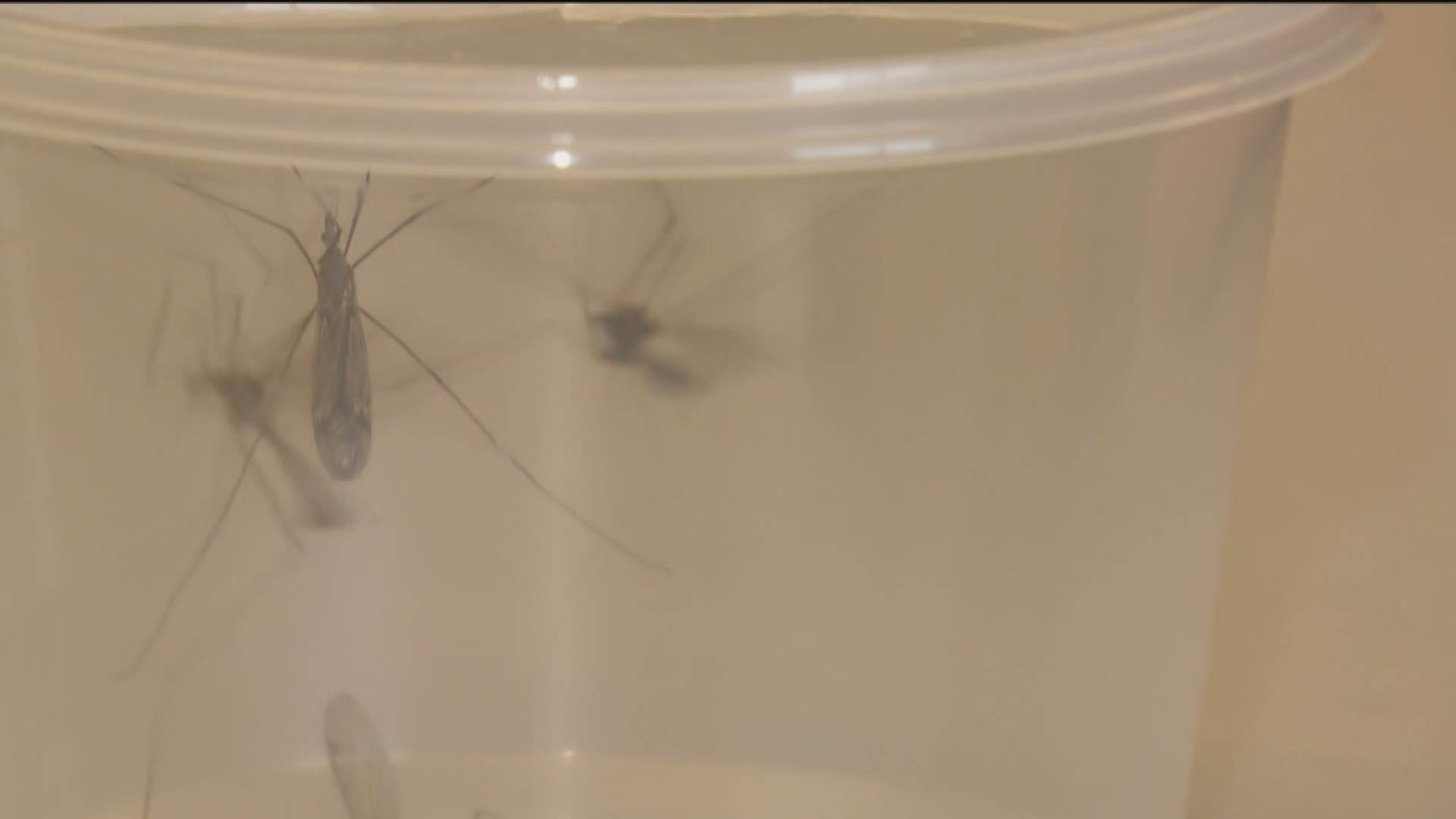SAN DIEGO — They’re baaack! San Juan Capistrano may have its swallows, but in San Diego County in the spring we have crane flies! Especially after wet winters like the one we’ve just had.
Crane flies look like giant mosquitoes, but they’re not. Some people think they eat mosquitoes—hence the nicknames “mosquito hawks” and “skeeter eaters”—but they don’t.
What they do is fly around crazily like creepy-crawly bumper cars, bouncing off walls, ceilings and especially lights—like the porch light in front of your house.
Even though they can freak people out, crane flies are absolutely nothing to be worried about, says Chris Conlan, the County’s supervising vector ecologist.
They’re harmless to people, Conlan said. They don’t bite and they can’t transmit any diseases.
Conlan said we actually have crane flies around all year long, but we notice them more in spring because it’s their peak breeding season after winter rains. However, he said we can probably expect to see more than usual this spring because we just had one of the wettest winters we’ve seen in years.
“We’ve already had people calling us (Vector Control) about them,” he said. “They think they’re big mosquitoes.”
crane fly A crane fly Crane flies are big for bugs. Their bodies can reach an inch or more in length and their pole-like, spidery-long legs can make them seem even bigger. Conlan said if you’re worried that the bug you’re seeing is a mosquito, there’s a fairly easy way to tell if it’s a crane fly instead. If it’s bigger than a dime, he said, it’s too big to be a mosquito.
Here are a few myths to be dispelled about crane flies.
Crane flies are not giant mosquitoes
Conlan said crane flies are related to mosquitoes, but they are not mosquitoes. They don’t bite; they don’t suck blood. In fact, most adult crane flies don’t eat at all. Those that do, he said, drink nectar.
Crane flies can’t transmit disease
They’re not a public health issue like mosquitoes or other vectors, which are the main concern for Conlan and the County’s Department of Environmental Health.
Crane flies do not eat mosquitoes
Nicknames like “mosquito hawks” and “skeeter-eaters” are colorful but totally inaccurate. Their wormlike larvae generally live in wet or moist soil, feeding off decaying organic matter. Some even live underwater. Adult flies don’t live long, about 10 days at the most, unless they’re gobbled up before that by birds, lizards or other creatures.
Because crane fly populations are high in the spring, and especially because they’re naturally drawn to lights like the ones we have next to our front doors or porches, this is the time of year that crane flies can get into your house.
“They’re very attracted to lights, so if you have any around openings to your home, it’s very easy for them to get accidentally swept into the house,” Conlan said. “And then they end up freaking you and the cat out!”
Again, crane flies aren’t harmful. But Conlan said that if they really unnerve you or family members, you can turn off your front door and porch lights, or retrofit them with yellow bug lights, and try to limit your outside lighting.
That way, he said, fewer crane flies and bugs in general will be drawn to the lights, where they can fly into your house when you open the doors to get in.

